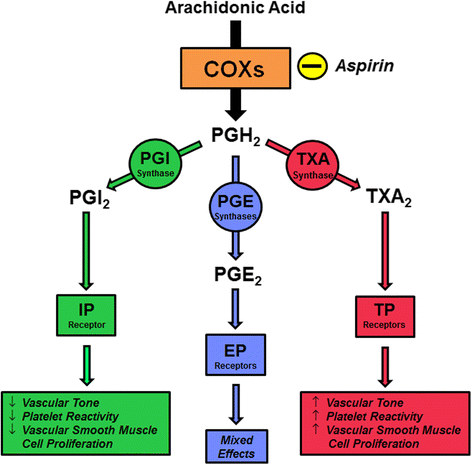Aspirin and multiple sclerosis
- PMID: 26123634
- PMCID: PMC4485640
- DOI: 10.1186/s12916-015-0394-4
Aspirin and multiple sclerosis
Abstract
Aspirin is widely used to lessen the risks of cardiovascular events. Some studies suggest that patients with multiple sclerosis have an increased risk for some cardiovascular events, for example, venous thromboembolism and perhaps ischemic strokes, raising the possibility that aspirin could lessen these increased risks in this population or subgroups (patients with limited mobility and/or antiphospholipid antibodies). However, aspirin causes a small increased risk of hemorrhagic stroke, which is a concern as it could potentially worsen a compromised blood-brain barrier. Aspirin has the potential to ameliorate the disease process in multiple sclerosis (for example, by limiting some components of inflammation), but aspirin also has the potential to inhibit mitochondrial complex I activity, which is already reduced in multiple sclerosis. In an experimental setting of a cerebral ischemic lesion, aspirin promoted the proliferation and/or differentiation of oligodendrocyte precursors, raising the possibility that aspirin could facilitate remyelination efforts in multiple sclerosis. Other actions by aspirin may lead to small improvements of some symptoms (for example, lessening fatigue). Here we consider potential benefits and risks of aspirin usage by patients with multiple sclerosis.
Figures

References
Publication types
MeSH terms
Substances
Grants and funding
LinkOut - more resources
Full Text Sources
Other Literature Sources
Medical

